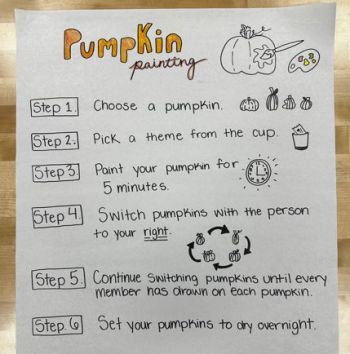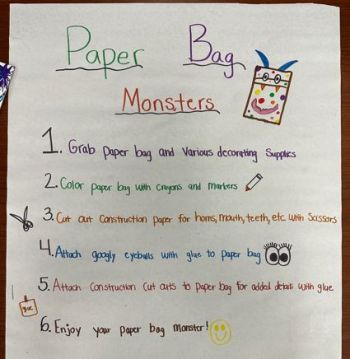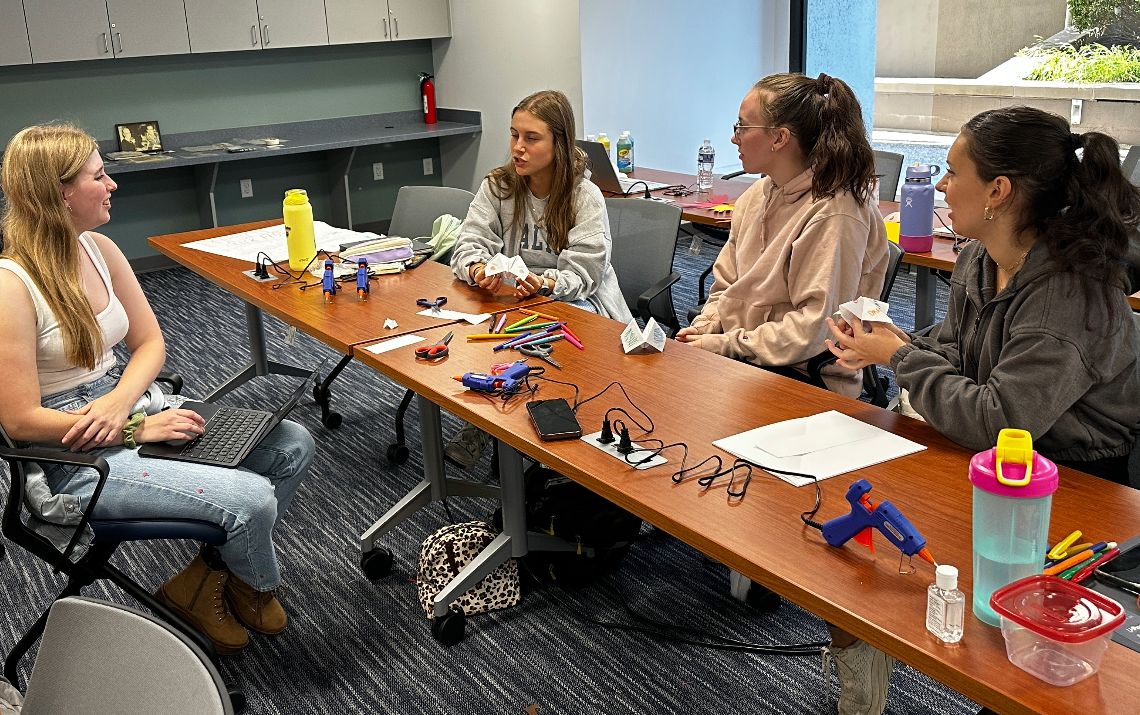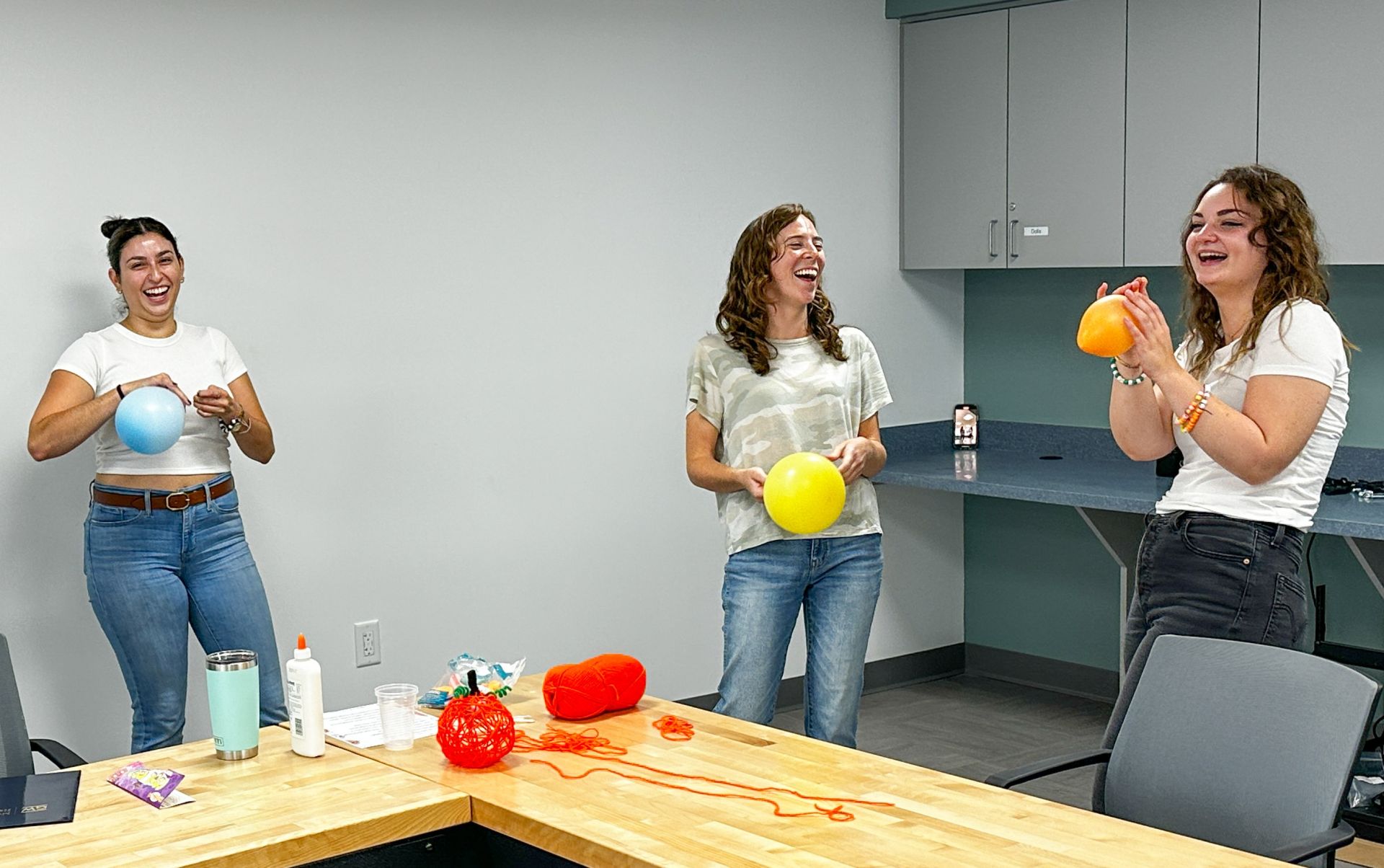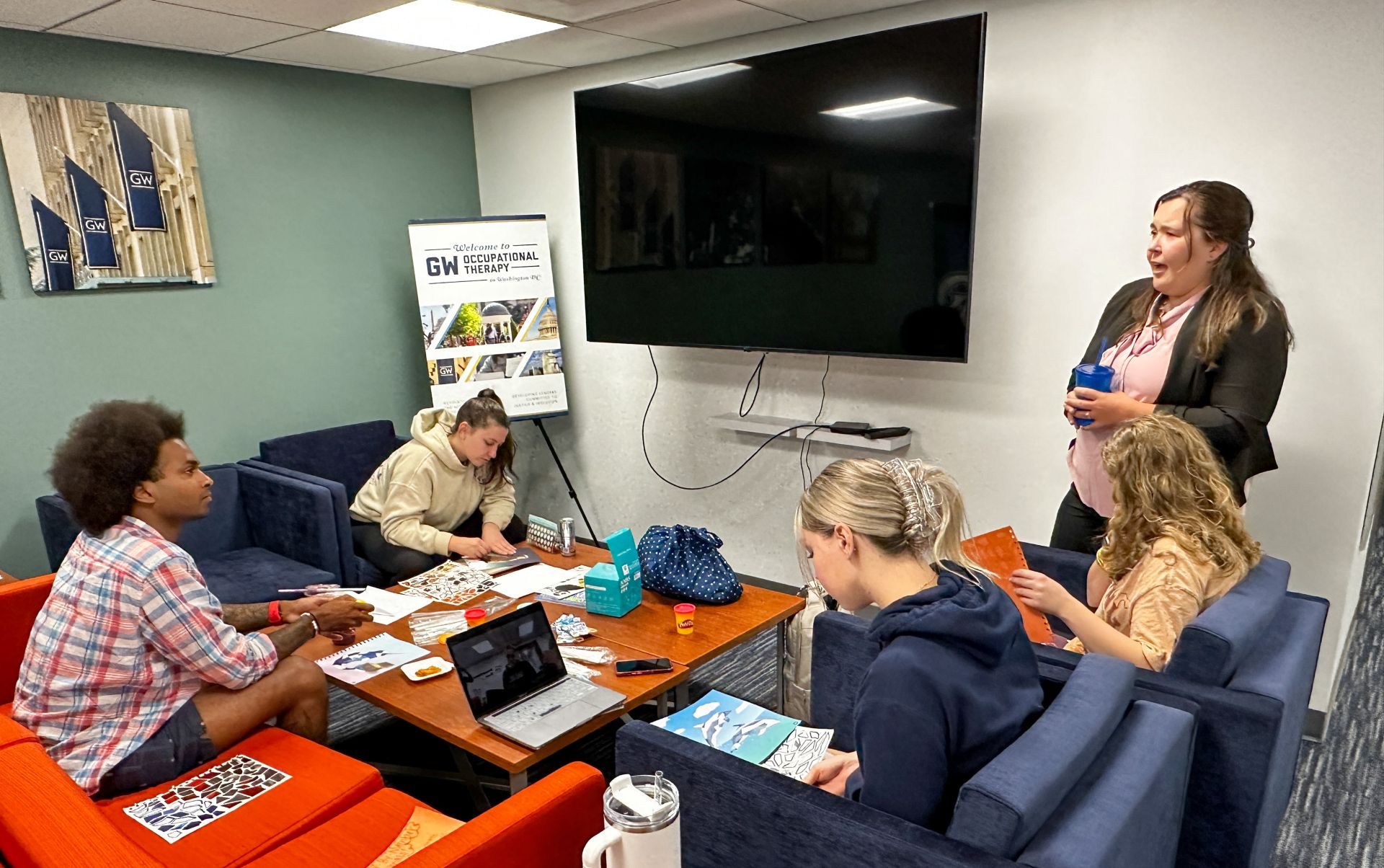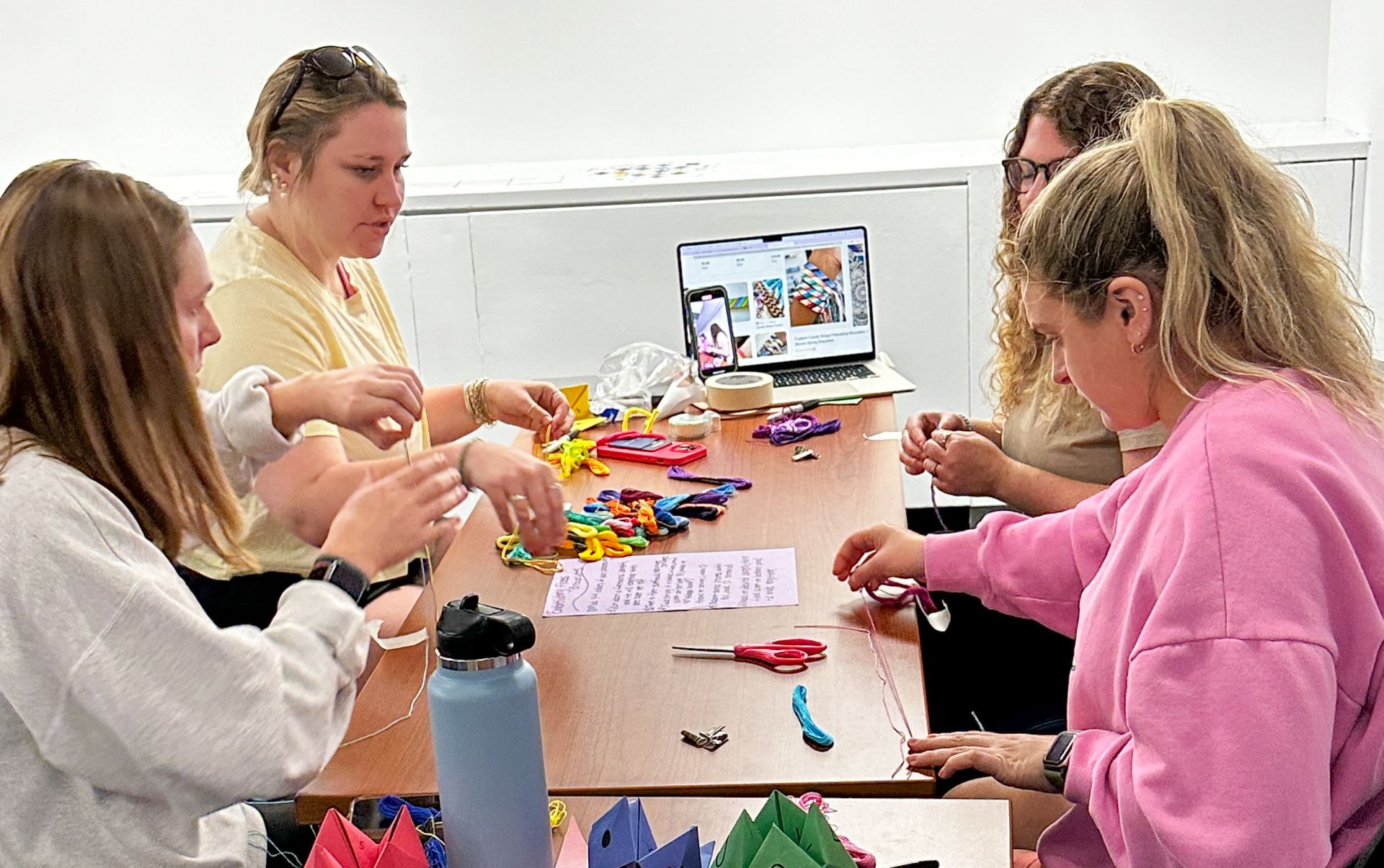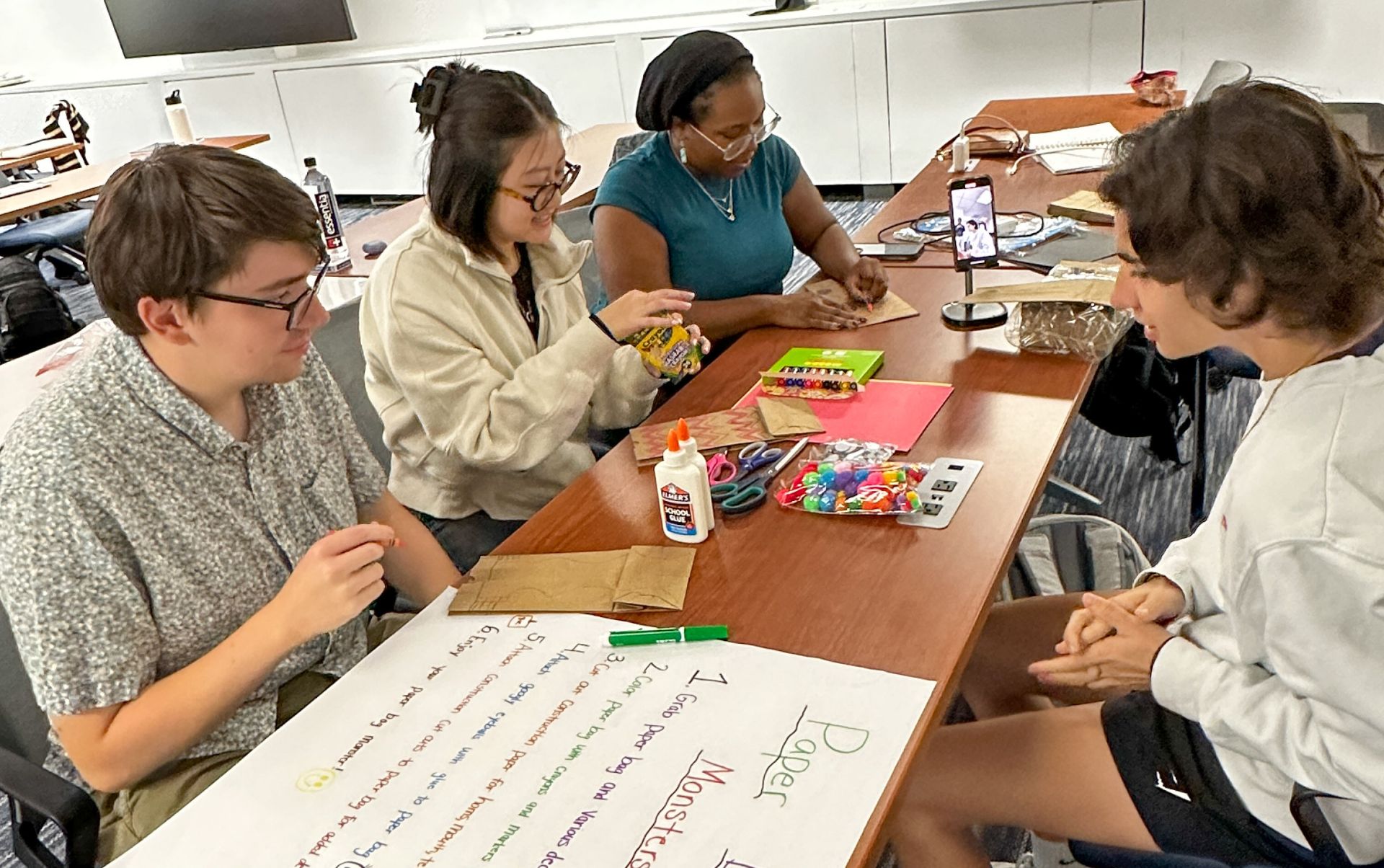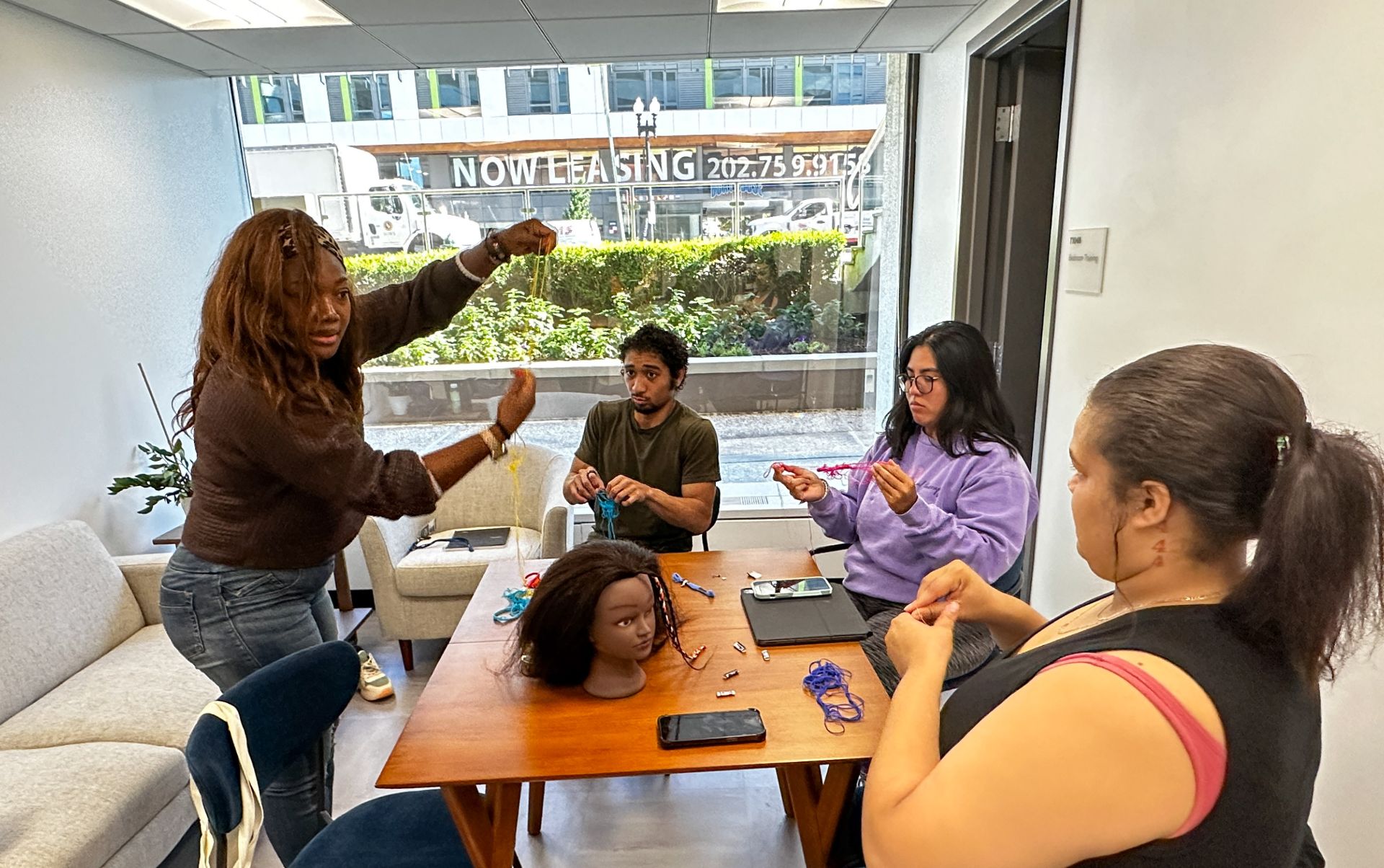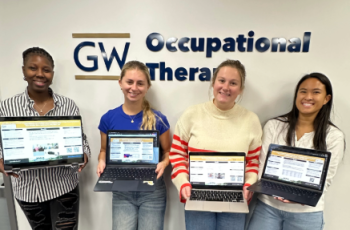In the Group Dynamics class, first-year students used arts, crafts, and other activities to reflect on their leadership roles while shifting their roles to be active participants and recognize others’ strengths and identities.
In an exercise to analyze themselves and their peers, students were placed into groups of three or four to present, instruct, and motivate their group. Some created string pumpkins with balloons, played card games, painted on canvas, and made soap bars, and paper bag puppets.
Aliyah reflected on stepping out of her comfort zone in her groups, as she explained “we learned a lot about each other and how to have good group dynamics. To be able to take a step back and let somebody else lead, or maybe to step up and take a turn leading, was really cool. I got to see different things from my group members because we all have very different personalities and we tend to sit in the roles that we're in, but those activities forced us out of our habitual roles.”
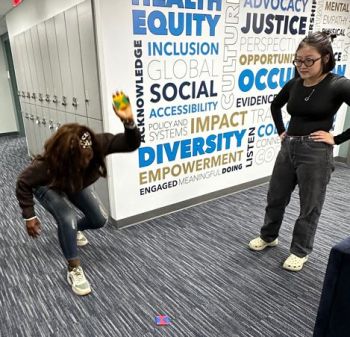
Students let their cultural backgrounds shine through the activities that they self-selected. “Jenny showed us a Korean game, known as Ddakji. She had PowerPoint instructions, gave us the detailed history of it and her experience with it, and she said it all with such passion,” said first-year OTD student, Jack Kling.
“I tend to be very goal-oriented and task-oriented. I'm very much like ‘let's get this done,’ so it was nice to kind of take a step back and let somebody else have the responsibility, delegate, because that’s hard for me” said first-year OTD student Aliyah Busselberg.
Justine Williams conceived herself as an ‘Organizer’ in her group while her peers found her to be the ‘Energizer.’ “I brought a lot of energy to the group, was really pumped up to do all the activities, and asked lots of questions but I also tend to be really organized and timely. My project was to paint pumpkins and I was really structured. Overall, we had a really fall-themed craft activity but very hands-on, which was really fun,” she explained.
Students enhanced their interpersonal and communication skills while navigating various personalities and leadership styles to build relationships. As practitioners, they are expected to apply these principles to occupational therapy and as they develop and implement collaborative interventions to offer an optimal and integrated healthcare.
